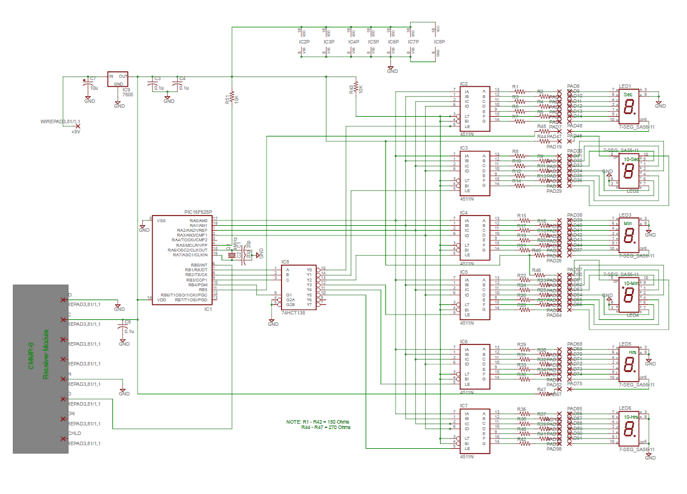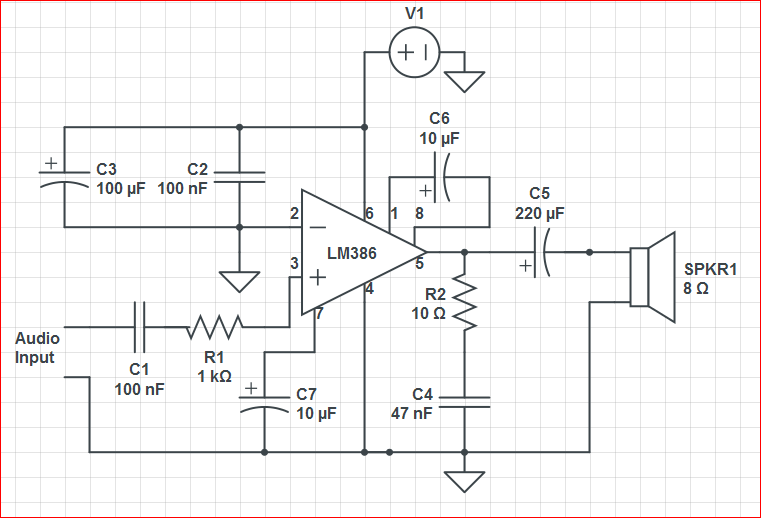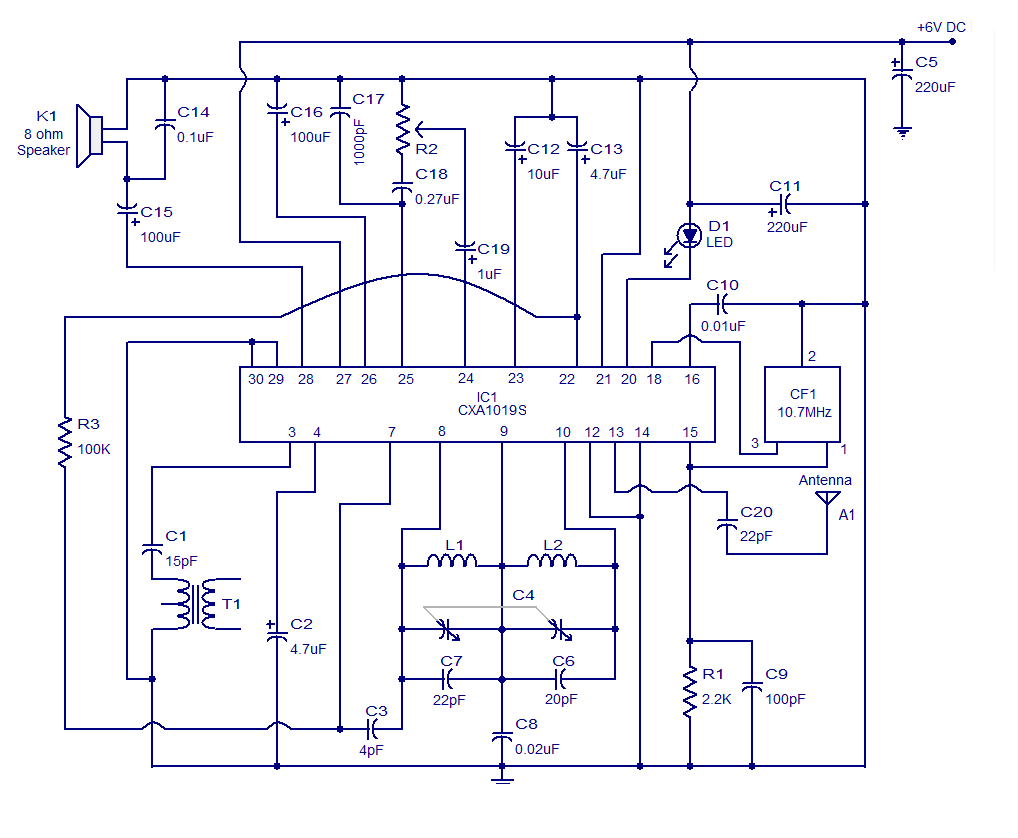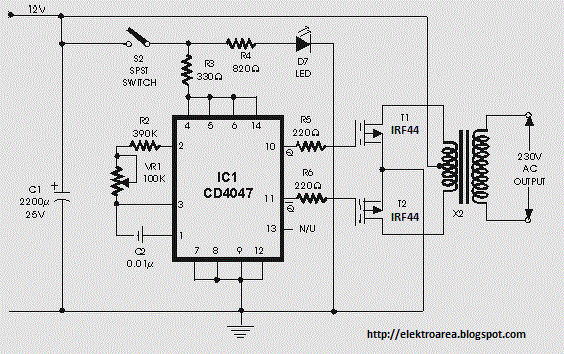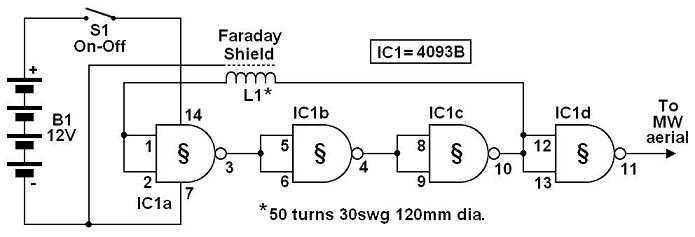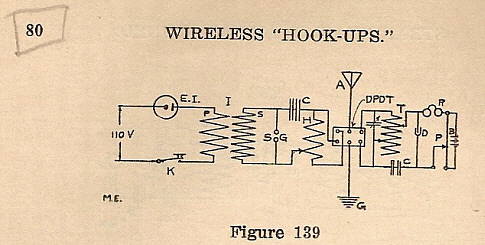
Two Station Intercom based on LM386
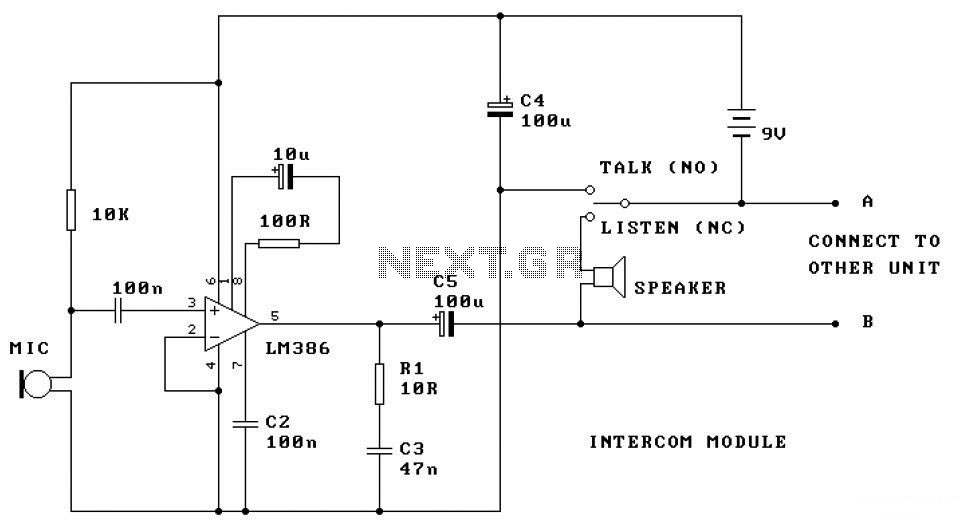
This is a two-station intercom system that operates using a pair of wires connecting each intercom unit. Each unit is self-contained, featuring its own battery, speaker, microphone, and amplifier circuit. An LM386 audio power amplifier is utilized in the design.
The two-station intercom system is designed for efficient voice communication between two locations using a simple two-wire connection. Each intercom unit is equipped with essential components that allow for independent operation. The inclusion of a battery ensures that the system can function without reliance on external power sources, making it suitable for various installation environments.
The LM386 audio power amplifier plays a crucial role in the system, providing sufficient amplification for clear audio transmission. This component is favored for its compact size, ease of use, and ability to deliver adequate power output for driving small speakers. The amplifier operates with a supply voltage ranging from 4 to 12 volts, making it versatile for different battery configurations.
Each intercom unit also includes a microphone for audio input and a speaker for audio output. The microphone captures the user's voice, which is then amplified by the LM386 and transmitted through the two-wire connection to the other unit. The receiving unit's speaker reproduces the sound, allowing for clear communication between the two stations.
Overall, the design of this intercom system emphasizes simplicity and reliability, making it an ideal solution for residential or small commercial applications where straightforward communication is required without the complexity of more advanced systems. The use of readily available components further enhances the practicality of the design, allowing for easy repairs and replacements if necessary.This a two station intercom. It uses two wires to run between each intercom unit. Each is self contained with its own battery, speaker, microphone and amplifier circuit. An LM386 audio power amplifier is used. It is widely available, used a.. 🔗 External reference
The two-station intercom system is designed for efficient voice communication between two locations using a simple two-wire connection. Each intercom unit is equipped with essential components that allow for independent operation. The inclusion of a battery ensures that the system can function without reliance on external power sources, making it suitable for various installation environments.
The LM386 audio power amplifier plays a crucial role in the system, providing sufficient amplification for clear audio transmission. This component is favored for its compact size, ease of use, and ability to deliver adequate power output for driving small speakers. The amplifier operates with a supply voltage ranging from 4 to 12 volts, making it versatile for different battery configurations.
Each intercom unit also includes a microphone for audio input and a speaker for audio output. The microphone captures the user's voice, which is then amplified by the LM386 and transmitted through the two-wire connection to the other unit. The receiving unit's speaker reproduces the sound, allowing for clear communication between the two stations.
Overall, the design of this intercom system emphasizes simplicity and reliability, making it an ideal solution for residential or small commercial applications where straightforward communication is required without the complexity of more advanced systems. The use of readily available components further enhances the practicality of the design, allowing for easy repairs and replacements if necessary.This a two station intercom. It uses two wires to run between each intercom unit. Each is self contained with its own battery, speaker, microphone and amplifier circuit. An LM386 audio power amplifier is used. It is widely available, used a.. 🔗 External reference
